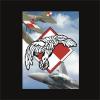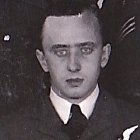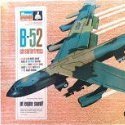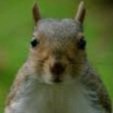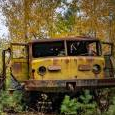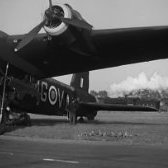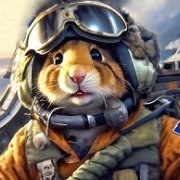-
Posts
1,718 -
Joined
-
Last visited
-
Days Won
1
elger last won the day on August 20 2024
elger had the most liked content!
About elger

- Birthday 08/08/1981
Profile Information
-
Gender
Male
-
Location
The Netherlands
elger's Achievements

Very Obsessed Member (5/9)
6.7k
Reputation
-
Something I've been low-key obsessed with (see the second part of the title of the thread) is the surface detail of the FW-190. HGW rivets get mixed reviews, but I was eager to try them. They recommend using Mr Surfacer as a primer, and using Mr Mark Softer - but I'm using One Shot primer and I only have Tamiya's Mark Fit Super Strong. Will it work? The first attempt was with some straight rivet lines on the underside of the cowl. The decals go on like normal decals, but you let them dry for 4-8 hours (I did 7 yesterday) and then you peel off the film. The rivets are a metallic colour, and barely have any texture. In that same session I added the decals for the landing gear covers. Same procedure, but on black primer. With these I lost some of the rivets when I peeled away the film (the one on the left) but as the decal was drying I could already see a bit of air underneath in that section so hopefully that's a good lesson. This morning I added some paint. Yellow for the cowl - and the first big test is whether these rivets will even be visible under paint: Some RLM 76 on the doors: It looks very subtle. But it passes the first test: the rivets are visible under paint. The second big test will be whether the rivets can withstand masking. Fingers crossed...
-
Some more work getting the Hasegawa 190 to proper early Fieseler A-6 configuration. Hasegawa correctly tells you to fill the A-8 hatches here, but does not tell you to add a new hatch. I scribed it with an old scribing template. (There's another small hatch on the port side that also needs to be filled). A similar story for the wings: next to the gun covers on the lower wing there should be small oval hatches on the A-5 and A-6 - the kit has larger more square ones that I've seen on A-8s. I tried to blend in the gun cover section inserts as well as possible - we'll see how they look under a coat of primer: A short coming of the A-5 boxing is that the fuselage machine gun ejection parts are too simple. I extended them with thin bits of styrene. I've also added Eduard photoetch to the landing gear bay. You can see I also filled a detail on the centre wing section behind the landing gear bay, because I'm assuming that this is connected with the ETC carrier (but I might be wrong): The A-5 kit does come with the correct main landing gear covers (which are shorter than the ones fitted to standard A-6s and the A-8, because of the inner doors). I added a break line to the legs, and I've added the protective cover around the gear's oleo strut by wrapping some metal wire around it and covering it with wine bottle foil Next I'll be priming and painting these parts and I'm curious how they'll look with some paint on. Thanks for looking!
-
I almost forgot: here's something I could use your opinions on. Have a look at this zoomed in image of the spinner. At first glance, it looks as if the back part of the spinner is black, and the front part is white and there could be a black spiral on the front part. But if you look closely you'll see that the spinner is actually badly damaged - the whole lower part looks like it was ripped off by the crash. So it could be a shadow. But then still: that black line really looks like a spiral, going perfectly diagonally across. Or both: did the spinner coincidentally tear off exactly where the line of the spiral is? So the question is: black spiral on the front part of the spinner, or just a very neat, straight shadow where the spinner has been damaged?
-
Currently, in the town where I work, I walk past posters such as this one at the train station. The promotional material for the current exhibition at the Frisian war museum prominently features a photograph of Bernhard Kunze's "White 12" (Wnr. 530135). On July 28th, 1943, a fierce aerial battle unfolded over the Netherlands and northern Germany as the U.S. 8th Air Force launched its first large-scale bombing raid against the heart of Nazi Germany. The primary targets were the Fieseler aircraft factories in Kassel and the AGO Flugzeugwerke in Oschersleben. In response, German fighter squadrons scrambled from across the region to intercept what was, at the time, the largest American bombing offensive yet. Among the German pilots that day was Unteroffizier Bernard Kunze, flying with 1./JG 1. His unit intercepted bombers returning from the Oschersleben raid when Kunze and his wingman spotted a lone, damaged B-17 struggling to make its way back to England. Separated from the formation and already bearing heavy damage, the bomber was an easy target. Kunze and his wingman broke off and moved in to finish it off. As Kunze maneuvered into firing position and opened up with his guns, the American bomber suddenly returned fire. The gunners' shots struck Kunze’s aircraft hard, sending it into a steep dive. Though he managed to pull out, his plane was barely controllable and continued to lose altitude rapidly. To his horror, Kunze realized he was on a collision course with a public outdoor swimming pool in Drachten, Netherlands — and there was nothing he could do to steer clear. It was a warm summer day, and the pool was packed. The aircraft skimmed just above the water and clipped a woman standing near the pool's edge with its wingtip, throwing her into the water but miraculously leaving her unharmed. The plane came to a stop at the far end of the pool. Swimmers, still in their bathing suits, fled out into the streets. Meanwhile, Kunze calmly walked across the road to a garage and phoned the nearby Leeuwarden airbase to request a car to retrieve him. I first built a model of Kunze's aircraft in 2002. I remember wanting it to be an A-7, because to me it's the most visually appealing variant, but this photo shows clearly that it's an A-6. I might have realized at the time that the A-7 wasn't yet around in July 1943. This is how that model turned out at the time. I used the old 1/32 Hasegawa kit. I gave this model away and went to Bernhard Kunze's sister, who was still alive in the mid 2000s. This model is configured like an A-6. although I did not get the font for the "12" correctly. But there's another problem. Kunze's aircraft was an -early- A-6 built by the Fieseler company in Kassel. It would not have been able to carry the external fuel tank, because the -early- A-6s, the first batch of about 200 aircraft, were for some reason fitted with inner gear doors (which, at Fieseler, were phased out during the production of the A-4, and reintroduced briefly when they started building the A-6). It also means that the aircraft would have been about a month old when it was shot down. This is a photo of a Fieseler-built A-6 of the same production batch as Kunze's "White 12". It shows no external fuel tank, and inner gear doors. The photo also shows that the shell ejection ports of the outboard cannons are taller than the later models. I conceived this project of revisiting Kunze's Focke-Wulf about a year ago. Back then, my idea was to use Revell's 190A-8 kit as a basis, and use parts of the Hasegawa 190A-6 kit (seen in the photo) to backdate that to A-6 standard. But that was a dumb idea. I'm always sort of charmed by the idea of kitbashing but there was no point to this other than kitbashing for the sake of kitbashing. Having both kits, I would say that the Revell kit is a good starting point for an A-7 or an A-8 (or an F) if you want to show off the details (like the engine). Arguably the wheel bays are more detailed, but other than that in all respects I think the Hasegawa 190 kits are nicer: the moulding is nicer and they are more crisp. The Hasegawa kit also conforms slightly better to Jumpei Temma's scale drawings because the Revell kit is slightly more narrow. This I found out when I started combining parts: the A-6 gun cowl in front of the windscreen only fits if you widen the Revell fuselage slightly, but then the canopy doesn't fit anymore and you run into trouble with the wings... I don't know what I was thinking. Plus - it was around this time that I found out about the inner gear door issue. I attempted to scratch build the doors and the mechanism, but in my attempts to combine the Revell A-8 and Hasegawa A-6 I had damaged some of the parts so last year I bit the bullet and bought another Hasegawa 190 kit - this time the A-5 which comes with the inner gear doors. But by this time I had spent quite a bit of money and I was frustrated with the subject so I put it away for a year, until a few months ago. The part on the left is the centre wing part of the A-6 (no gear doors) and the part on the right is the center wing part of the A-5 (space for gear doors) - which, as we learned from the book, is also appropriate for early, Fieseler built A-6s. Since I had the Revell kit and some of the parts are a bit nicer than Hasegawa, I'm going to use some of them - including the tail leg which will allow me to use the Eduard resin wheels. The resin mail wheels in the set are also the correct ribbed type (the kits only come with late, smooth tires). Another one of the few things from the Revell kit that is nicer is the spinner (right, Hasegawa left). I will be using Hasegawa's propeller blades. And finally Revell's seat is a bit nicer so I'm using that. The wires are there to attach the seat belts after painting (hopefully). Because the Revell spinner is a tad wider, I needed to beef up the base plate. I thought about adding detail to the engine, but virtually nothing can be seen when the nose section is complete. That's it for now - thanks for looking!
- 11 replies
-
- 10
-

-
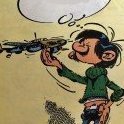
Avro Lancaster B Mk.I Border Models
elger replied to Artur's topic in Ready for Inspection - Aircraft
yup - that's a good one! -

A simple 1/48 Hasegawa P-51D build.
elger replied to Mycapt65's topic in Work in Progress - Aircraft
if you're thinking of getting a different seat, maybe it's also worth considering getting a different spinner: it's the only part of that old Hasegawa kit that looks off to me -
I recall from when I built my early Mk 1 a few years back that I left out that radio you've fitted to the navigator's station - I think that those were only fitted to mk IV glider tugs. Didn't know about the glycol tank not fitted to early aircraft though, and worked really hard on putting mine on a little platform... oh well
- 1,436 replies
-
- 2
-

-

-
- 1940 obsession
- RAF Bombers
-
(and 1 more)
Tagged with:
-

Trumpeter 1/48 Vickers Wellington Mk1c
elger replied to pacificmustang's topic in Ready for Inspection - Aircraft
lovely indeed! -
I finished the 1/72 RS Dornier 17P as F6+HM, which made a belly landing near Usquert on October 26th, 1939. The RS kit is a limited run kit - and as such rather crude in some places, but it has extremly fine panel lines. I replaced the kit's engines with 3d printed items from Metallic Details which were lovely. I became somewhat obsessed with the shape of the exhausts, which prompted me to buy an ICM Do 17Z kit. I also used that kit's landing gear and wheel wells. I painted the model with ATOM paints from Ammo - which are fantastic. The national markings all came from my spare decal collection (the oversized wing crosses are from a 1/32 111P set), and the aircraft's ID markings were made with custom masks made with my Silhouette Cameo. Build thread here: Thanks for looking!
- 8 replies
-
- 59
-

-

-

-
indeed - best wishes - hoping for a speedy recovery!
- 149 replies
-
- 1
-

-
- Eduard 1/48
- Bf109G-6
-
(and 1 more)
Tagged with:


